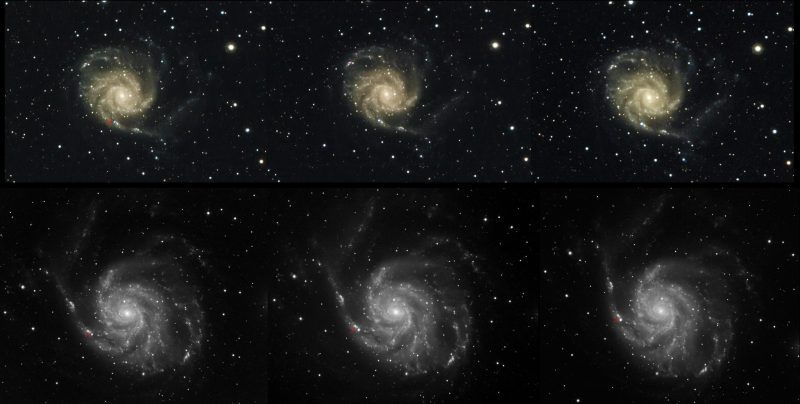New Supernova spotted in the spiral galaxy M101! Closest in a decade
- Maria Enotiade

- May 25, 2023
- 2 min read
Updated: Sep 4, 2023

A new, close supernova
A new supernova in the Pinwheel Galaxy, aka M101, is the closest to Earth in a decade. Amateur astronomer Koichi Itagaki discovered it on May 19, 2023. The supernova should continue to brighten for a few days. It should remain visible to amateur astronomers with backyard telescopes for a few months. The supernova – named 2023ixf – lies in the direction of the constellation Ursa Major, near the end of the handle of the Big Dipper.
The last supernova in M101 was in 2011. Andy Howell, an astronomer at the University of California, Santa Barbara, explained on Twitter that the 2011 explosion resulted from a white dwarf that underwent a thermonuclear supernova. Andy said that the new supernova is most likely from a different cause, from a core collapse of a massive star at the end of its life. While observers won’t be able to see this supernova with the unaided eye, amateurs should be able to catch it backyard telescopes. As Andy said: "This new supernova will increase in brightness over the coming days. You should be able to see it with backyard telescopes, for a few months, though it will just be a point of light."

How close is the closest in a decade?
M101 is 21 million light-years away. So even though it just appeared to us on Earth Friday, it occurred 21 million years ago. And even though it’s the closest in a decade, it’s still quite far away. In fact, for a supernova to have an effect on Earth, it would have to be within 50 light-years of our planet. You can rest assured that the new supernova won’t harm Earth. Instead, we get to watch a relatively rare event as scientists gather information on the new supernova.
Supernova photo galery

For the supernova images, each photographer chooses their own orientation. Therefore, you can see the supernova in various locations, such as in the 2, 11, 5, or 8 o’clock positions, for example. That’s because there is no standard way to capture a galaxy (there’s no “up” in space).



The supernova will continue to brighten for a couple of days and be visible to amateurs in backyard telescopes for a few months.
Did you capture an image of the supernova? Send us your images, we'd like to feature them!
source: earthsky.org, 'New supernova! Closest in a decade', Kelly Kizer Whitt



























Comments